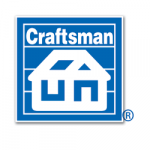Many contractors prefer time and material (cost-plus) contracts. And for good reason. With T&M;, you’re sure to recover expenses and earn a profit. There’s no dispute about the cost of changes. Work can start before design is complete. The job gets done just the way the owner wants – and at the owner’s expense. What could be better?
I agree. But it’s not automatic. You’re headed for trouble on any T&M; job if the contract isn’t airtight. Some signs of trouble:
I didn’t agree to pay for that. Most disputes on a T&M; job will be about labor cost. For example, does the contract set a specific hourly rate for each trade? If not, does the charge for time include all taxes, insurance and benefits? What about overtime? Are there limits on pay rates? Is it legitimate to charge for non-productive labor (supervision)? Or does non-productive labor have to come out of OH&P;? What’s the charge for contractor-owned tools and equipment?
How do I know these charges are right? Few owners will be satisfied with a simple expense summary. Most want to see copies of invoices, receipts, cancelled checks and pay ledgers. Some will insist on the right to audit your books – and may decline charges that aren’t fully documented. No contractor feels comfortable in that position.
Why charge me for your mistakes? The owner’s cost will be higher when work doesn’t pass inspection, has to be torn out or repaired. Few owners are eager to cover expenses like that. None want to pay for what they consider pure negligence.
Your OH&P; seems excessive. The charge for overhead and profit can be a lump sum or a percentage of total cost. If OH&P; is a set sum per week or month, the owner won’t see a reason to pay if the job sits idle for weeks. If OH&P; is a lump sum for the job, a contractor takes a hit when the job runs behind schedule. If OH&P; is a percentage of job cost, a careful owner will scour every labor and material charge for padded expenses that inflate your net.
Are you sure this was really necessary? Owners don’t understand construction the way a contractor does. You’re on the hot seat if an owner wants a full explanation of everything that seems out of line.
T&M; contracts are illegal for home improvement work in six states. See my blog of July 2010 for legal ways around this restriction.
A good contract can avoid nearly all the likely sticking points in a T&M; contract. For example, to settle the “Was that really necessary?” question, define “reasonably necessary” very precisely in the contract. Then point to that definition when you sense “really necessary?” is about to become an issue.
Three more points on T&M; jobs:
1. An owner and a contractor remain potential adversaries. Only the context for disputes has changed.
2. Nearly all the likely disputes on a T&M; job can be resolved with a good contract.
3. The best tool for drafting T&M; contracts is Construction Contract Writer. The trial version is free.

